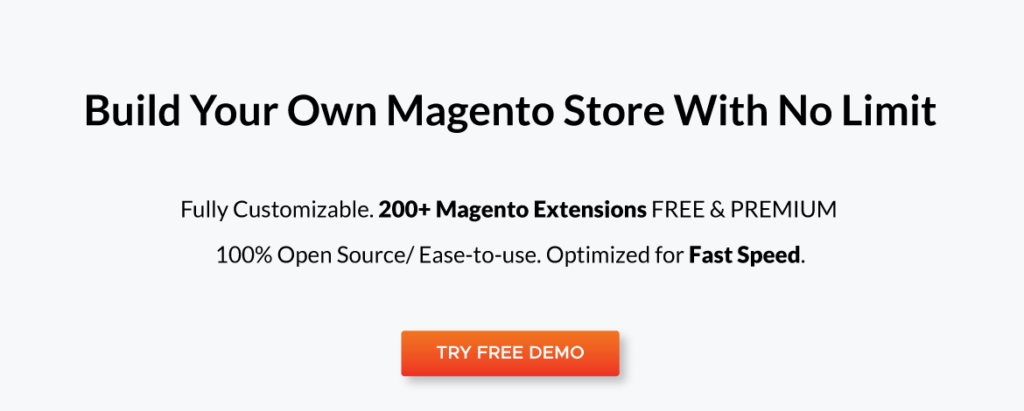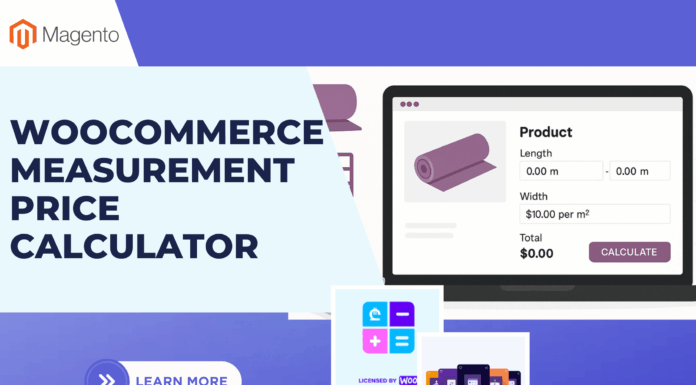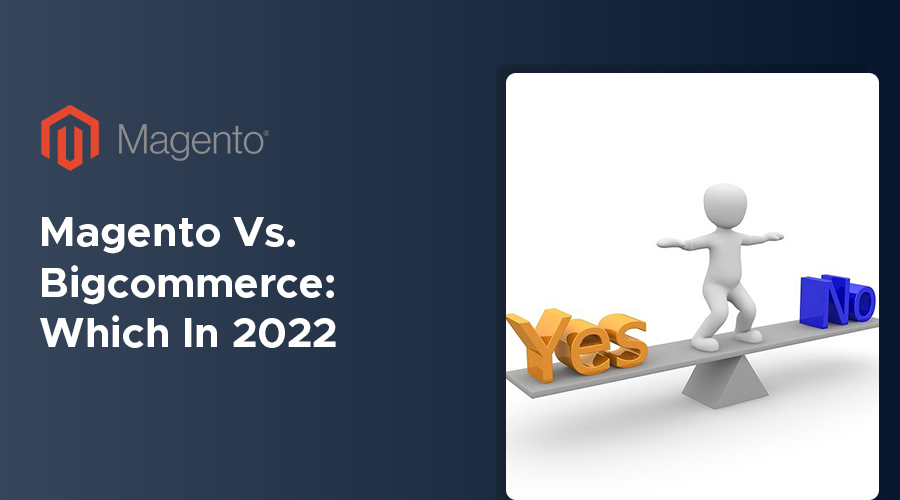
Magento vs BigCommerce, if you are thinking about opening an online store, you might have heard about them while researching. They both are big names in the eCommerce list, then which is the right one for you?
This article is here to help clarify and compare the features, pros, and cons of the two platforms – Magento vs. BigCommerce so that you can make the right decision for your upcoming store.
Table of Contents
I. Magento vs. BigCommerce: What Are They?
Initially released in 2008, Magento is an open-source e-commerce platform with a built-in PHP feature, a programming language that provides vendors and programmers great flexibility and control in creating their online stores. According to Magento, there are currently more than 250,000 stores operating on the platform. As a content management system, the number of websites using this solution accounts for 0.7% of the Internet.
BigCommerce, published in 2009, is an open Saas (software-as-a-service) e-commerce platform, which implies that users do not own the software, they pay a monthly fee to use it. BigCommerce’s features mainly focusing on people without much experience in programming, but experienced programmers also have their place on the platform. At the moment, the company has about 150,000 stores and 60,000 active users.
II. Magento’s Significant Features

Marketing, Promotions, and Conversion Tools:
- Related products, up-sells and cross-sells.
- Landing page for categories.
- Minimum Advertised Price (MAP).
Search Engine Optimization:
- 100% search engine friendly.
- Google Site Map.
- URL rewrites give full control of URL’s.
- Google Content API for shopping.
Site Management:
- Control multiple websites and stores from one Administration Panel.
- Fully 100% customizable design using templates.
- Support for multiple languages and currencies. Web Services API for easy integration between Magento and third-party application.
Checkout, Payment, and Shipping:
- SSL security support for orders on both front-end and back-end.
- Shopping cart with tax and shipping estimates.
- Additional payment extensions available through Magento Connect.
III. BigCommerce’s Significant Features
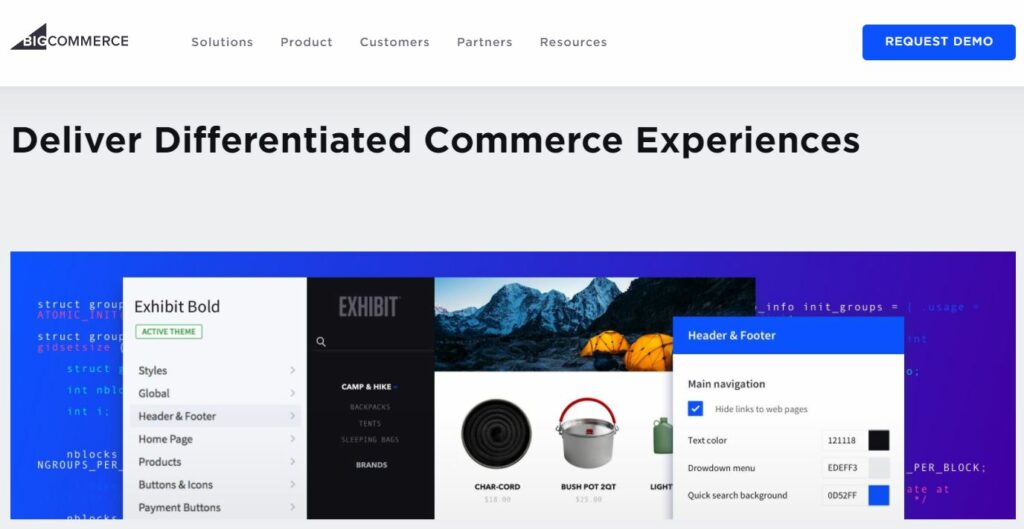
Storefront Design:
- Page Builder Visual Editor with a drag-and-drop solution, no coding required.
- Theme Customization with built-in HTML, CSS and Javascript.
- Mobile Optimization. Make your site mobile-responsive.
Storefront Conversion:
- Coupons & Discounts. No scripting required.
- Digital Wallets for easier payment with Apple Pay, Amazon Pay, PayPal One Touch, etc.
- Merchandising. Use drag-and-drop functionality.
Cross-Channel Commerce:
- Multi-Storefront with a single login.
- Brick & Mortar. Keep in-store sales automatically updated with native POS systems.
B2B:
- Customer Groups.
- Bulk Pricing with customization down to the SKU level.
- B2B Payment. Flexible payment methods and credit authorization.
IV. Magento vs. BigCommerce: Comparison
1. Ease of Use
If you are a normal seller, ease of use is always a plus. It allows beginners to focus on their main purpose – selling, rather than spending most of their time on figuring out how to operate the stores. BigCommerce is the choice for you if you fall into this category.
Meanwhile, despite providing everything a tech-savvy might need, Magento is not that complicated either once the setup is done. Besides, if you use the paid version of Magento, they have a supportive IT team to help.
2. Pricing
Pricing is essential to decision-making. Below are packages’ prices from the two providers.
Magento
Magento offers two versions of the platforms: Magento Open Source and Magento Commerce (formerly known as Magento Enterprise).
- Magento Open Source – free. Hosting – $4-$100+/month. This is the more popular one, accounting for 83% of Magento’s current stores.
- Magento Commerce – customized price. The price varies depending on what features you would like to have. This version aims for large business or enterprise-level stores.
BigCommerce
BigCommerce provides three packages and also one tailor-made plan for enterprises.
- Standard – $29.95 per month (A full-featured online store)
- Plus – $79.95 per month (Optimized conversion and customer group management)
- Pro – $199.95 per month (High-volume security and analytics)
- Enterprise – contact for pricing (Ultimate cloud ecommerce selling solution)
3. Design Customization

There are only 7 free themes on BigCommerce. The others’ prices range from $145 to $235. Magento, on the other hand, provides many free themes by Magento Marketplace.
Magento is also open for third-party sites, thus, you can customize the look you want freely. Meanwhile, as BigCommerce only comes with a number of options regarding designing, there is not much modification for you to make.
4. Ecommerce Features
Magento is a strong player in terms of built-in eCommerce features as we have mentioned above. However, in addition to that, as it is open to third-party Magento extension providers, there are 5,831+ extensions provided on Magento Marketplace, a long list from all categories for you to choose from.
BigCommerce also owns many great built-in tools and provides its users with 600+ apps in Apps Marketplace for different sections in the business.
5. Search Engine Optimization
In terms of marketing, SEO is vital to any online business. According to the best eCommerce platforms for SEO list, Magento is in the first place and BigCommerce is in the fourth place. Magento is the best option for those who want to optimize their stores on search engines.
6. Payment Options and Fees
On Magento, payment methods are from third-party providers. There are 364+ apps in their Magento Marketplace for you to choose from based on your business’s requirements. As this large number of apps supports the availability in other countries and languages, it is a plus point for international vendors.
For BigCommerce, users can choose from 65+ pre-integrated online payment solutions which are also available in many countries and currencies.
V. Magento vs. BigCommerce: Case Studies
Let’s see how the customers are using Magento vs. BigCommerce with the below case studies.
1. Fashion, Apparel & Accessories
Magento – Aldo
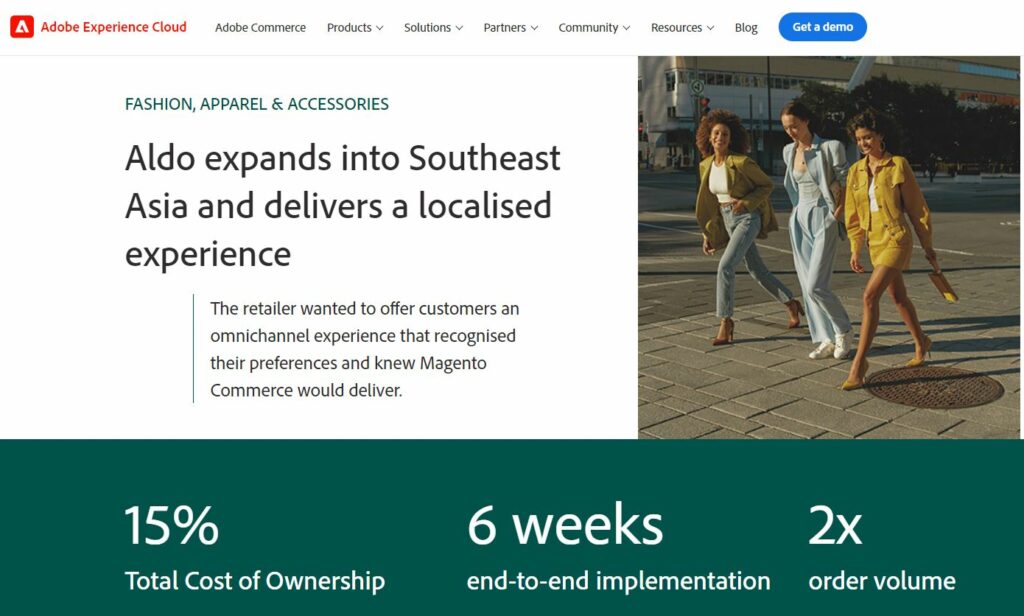
Aldo is a global footwear and accessories company. While on the way to bring their e-Commerce to international customers, Aldo needs a rewarding system for their loyal customers. The team’s challenge is that they need a solution that has the ability to scale and to scale quickly. Magento Commerce’s great flexibility allows them to manage complex reward programs and deliver a local experience to their customers in different countries using only one database.
BigCommerce – Superdry

When moving to Australia, Superdry was looking for a platform they can control locally and is simple enough in operating so that they can customize things the way they wanted. They felt that BigCommerce was the right option for them.
2. Home & Garden
Magento – EGLO
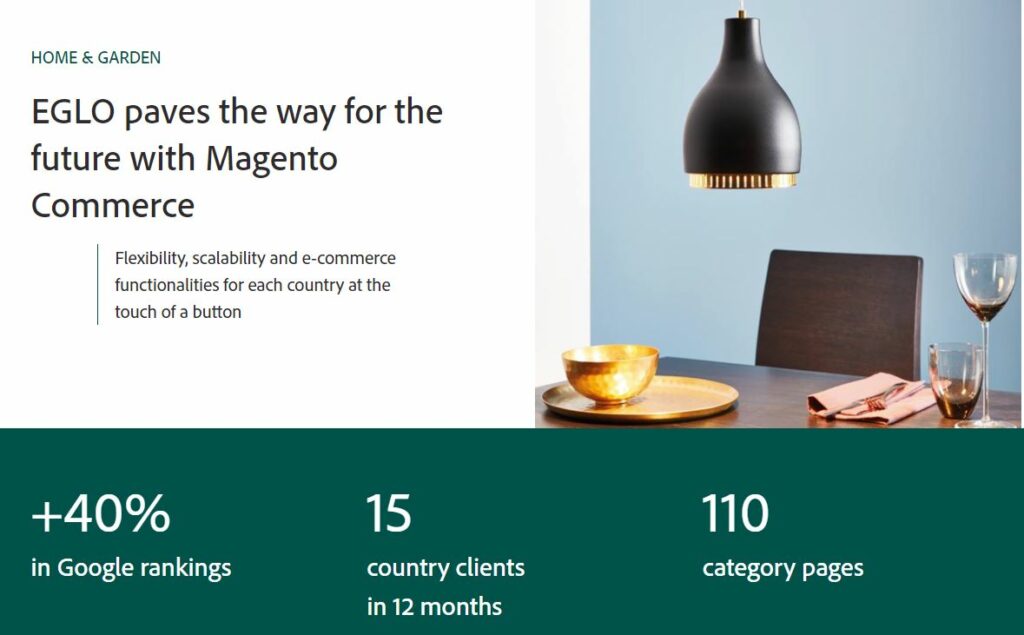
EGLO’s demand is a platform that can enable them to present their products to customers in a virtual store and the technical flexibility to switch on the eCommerce features quickly. Magento, according to them, is an asset for their future.
BigCommerce – FirstVet
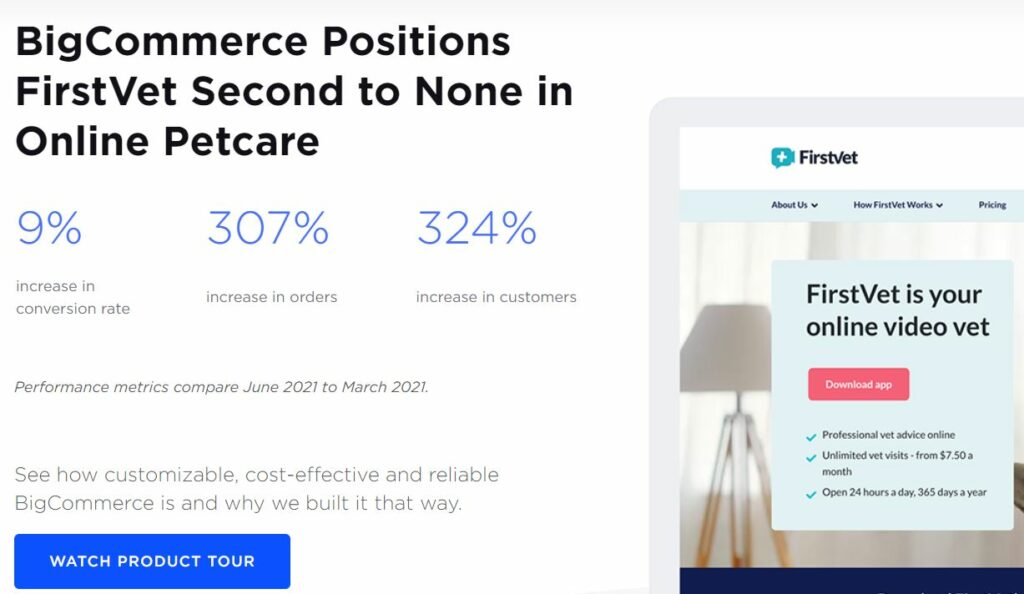
FirstVet company originated from a three-generation family company where digitalizing is a real struggle. They favor a solution whose updates and patches are already arranged. That is the reason why they intentionally looked for a Saas solution like BigCommerce. With the ease of use in terms of maintaining the site, the platform is a perfect choice for FirstVet.
3. B2B & Industrial
Magento – FoodServiceDirect.com
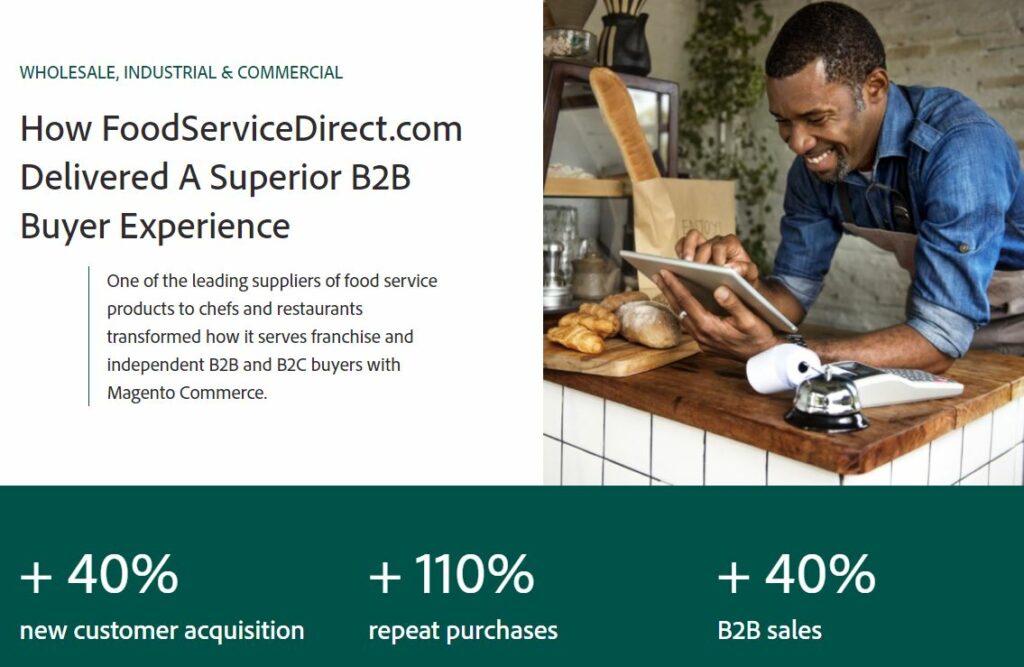
With a large and varied amount of products that needed to be categorized, FoodServiceDirect.com required a platform where they can design different themes for each product page and brand page, and the flexibility to review everything as many times as needed. Magento came in being the exact solution they asked for.
BigCommerce – United Aqua Group
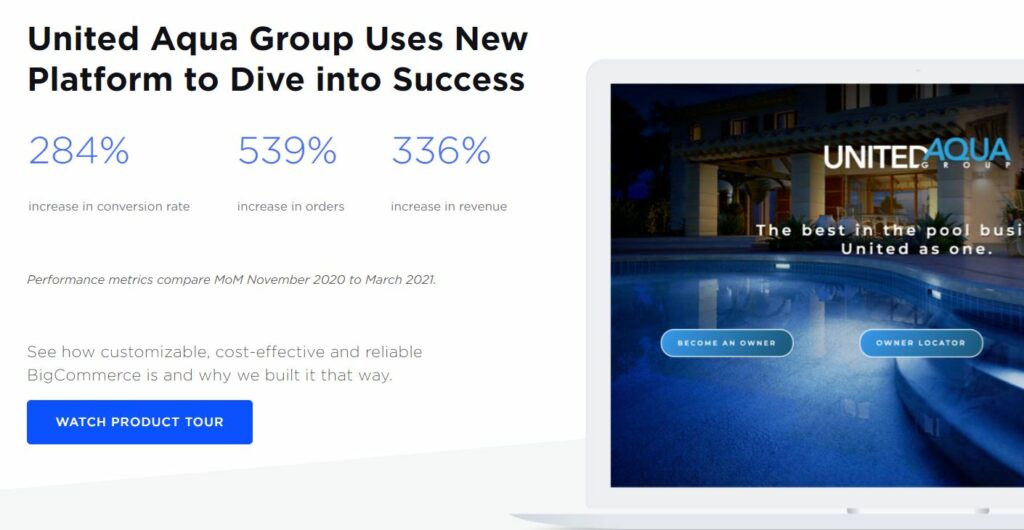
The client looked for an eCommerce platform that fitted their budget with the ease in operating and in accessing tailor-made expansions where necessary. They wanted to equip their store with as many functions as possible so that their customers do not have to go anywhere else. With those objectives in mind, BigCommerce was the choice for them.
VI. Magento vs. BigCommerce: Conclusion
After comparing the main aspects of an eCommerce platform, we have come to a conclusion that both Magento and BigCommerce are great platforms to run your store. Pricing is not really a problem when both companies have free or low price packages. If you want to spend as little effort as possible in maintaining your store, BigCommerce is the one for you. On the other hand, if you have a specific idea of how you want your store to be and would like to make it exactly like that, Magento with high flexibility level is the best choice.
Our big thanks go out to every vendor that has made this Magento vs. BigCommerce Comparison! This is the most comprehensive list of the best Magento vs. BigCommerce Comparison on the Internet and it’s our honor to have you as part of this!
If you want to add or remove any item in this list, feel free to submit your extension at Submit form.
Stay tuned. We will come back with more informational reviews!
Thank you and stay safe!











![[SALE OFF] Discount 30% All Premium Extensions On Christmas And New Year 2025 christmas-and-new-year-2025](https://landofcoder.b-cdn.net/wp-content/uploads/2024/12/christmas-and-new-year-2025-1-218x150.png)




